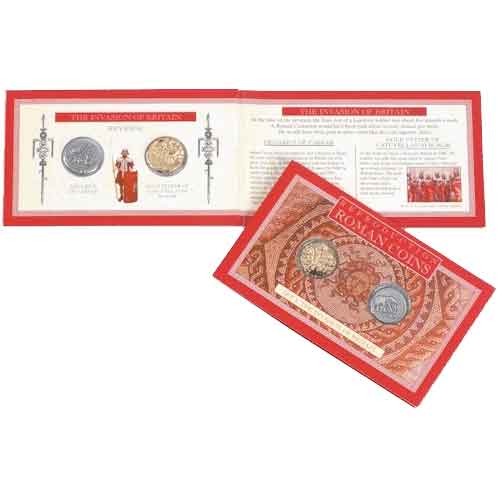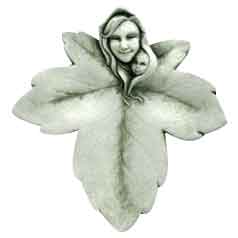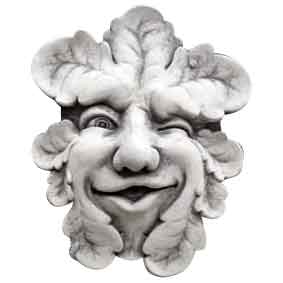The Invasion Of Britain Roman Coin Set 1
$4.56
Availability: 3 in stock
Our reproduction Denarius of Caesar is based on a coin struck in 49 BC and is made from lead-free pewter. The coin celebrates Caesars conquest of Gaul and has the Emperors name and an elephant trampling a serpent on one side and a simpulum, sprinkler, axe, and priests hat on the other, publicizing his office as chief priest. The original Gold Stater of Catuvellauni was struck between 45-20BC. This reproduction 22ct gold plated stater coin is made from lead-free pewter and shows a horse on one side and a decayed wreath from a bust on the other. The two coins are held in clear plastic blisters and are supplied in full color pamphlet style packaging, complete with images and historical information relating to Roman coins and the invasion of Britain.
Roman coins were not just a means of paying for goods. The obverse of the coins portrayed the ruling Emperors face. The reverse of the coins were used to communicate great events or to promote the status of the Emperor to his people. For example, the Emperor may have depicted a god that had attributes with which he wished to be associated. The coins were circulated throughout the Empire bringing news, perhaps of events that had taken place far away.
At the point of Caesars foray into Britain in 55 BC, the country was split into areas ruled by various Celtic tribes such as the Catuvellauni. Some of these tribes put up a strong resistance to the Roman forces. At the time of the invasion of Britain, the basic pay of a legionary soldier was about five denarii a week. A Roman Centurion would have been paid about seventy denarii a week.
Key Features:
- Replica Historical Coin
- Great for Kids, Collectors, Gamers, and History Groups
- Made From Pewter
- Cast From Originals
1 review for The Invasion Of Britain Roman Coin Set 1
Only logged in customers who have purchased this product may leave a review.












mcicero020 (verified owner) –
The denarius has a diameter of approx. 17mm and is 1mm thick. The stater has a diameter of approx. 18mm and is 2mm thick. WRL is stamped on the reverse of both coins.
I bought this with the intention of taking the coins out, so although I was expecting to need to destroy the packaging I was hoping I might be able to salvage it as reference to help identify each coin later. These cardboard booklets are printed as a trifold, with the leftmost side folded over to hold down the blister pack of coins. It seemed well-glued for those of you who’d want to leave it intact, but the glue was also weak enough that I could peel back the cardboard and remove the coins without damaging the booklet at all. All three coins are held in the same blister pack, which is not reusable – it’s made of two plastic sheets glued together and once you peel them apart the adhesive is broken. This blister pack is clearly not designed to be visible, with roughly cut edges which aren’t aligned. I mention this because I’ve found that there are a few types of packaging used in the Westair reproductions sold here. This one is easier to disassemble than others, but although a few of their blister packs are reusable this is not one of them.